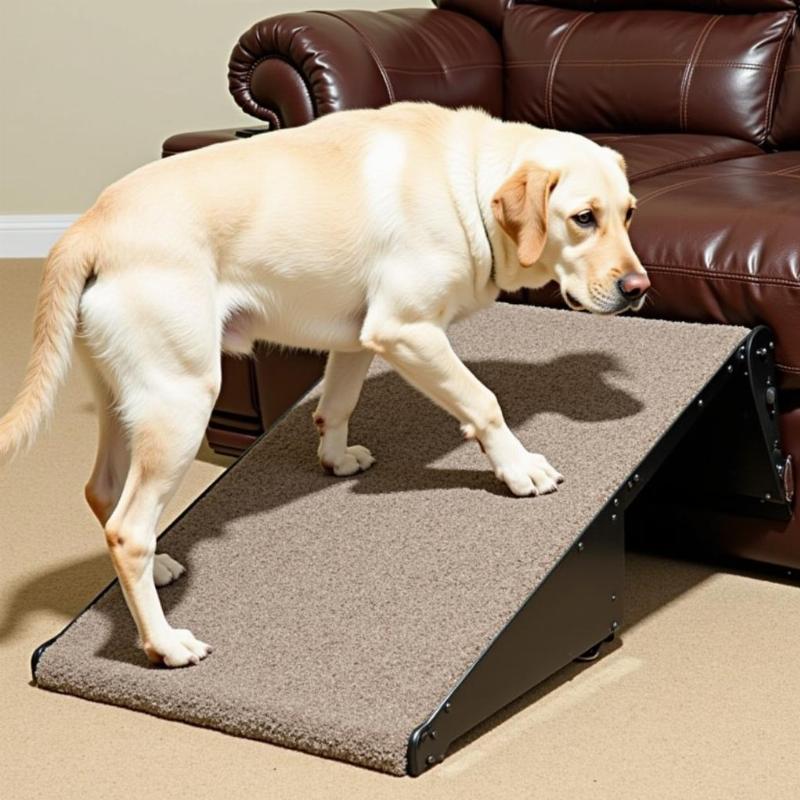When your furry friend struggles to walk, it’s a distressing sight for any pet owner. “My dog can hardly walk” is a search query filled with worry and a desire for answers. Understanding the potential reasons behind this difficulty and knowing how to address it is crucial for ensuring your dog’s well-being. This article will guide you through the common causes of mobility issues in dogs, diagnostic steps, treatment options, and preventative measures, providing you with the information you need to help your canine companion regain their stride.
Why is My Dog Having Trouble Walking?
Several factors can contribute to a dog’s difficulty walking. Age-related conditions like arthritis and hip dysplasia are common culprits, especially in larger breeds. Injuries, such as sprains, strains, or fractures, can also lead to mobility problems. Neurological issues, including intervertebral disc disease (IVDD) and degenerative myelopathy, can affect a dog’s ability to walk. Tick-borne diseases like Lyme disease can cause joint pain and inflammation, making movement difficult. Finally, certain infections or metabolic disorders can also impact mobility.
Diagnosing the Problem: When to See a Vet
If your dog is showing signs of difficulty walking, such as limping, stiffness, or reluctance to move, a visit to the veterinarian is crucial. Early diagnosis can significantly impact treatment outcomes. Your vet will likely perform a physical exam, review your dog’s medical history, and may recommend further diagnostic tests, such as X-rays, blood tests, or even an MRI or CT scan to pinpoint the underlying cause.
Treatment Options: Helping Your Dog Regain Mobility
Depending on the diagnosis, your vet will recommend a tailored treatment plan. This might involve medications to manage pain and inflammation, physical therapy exercises to strengthen muscles and improve mobility, surgery to repair injuries or correct structural issues, or alternative therapies like acupuncture or laser therapy.
Home Care and Management
Beyond veterinary care, you can play a vital role in supporting your dog’s recovery at home. Providing a comfortable and supportive environment is key. Consider investing in orthopedic beds, ramps, or elevated food and water bowls to ease strain on joints. Maintaining a healthy weight for your dog can also significantly reduce stress on their joints.
 Senior Dog Using Ramp to Access Couch
Senior Dog Using Ramp to Access Couch
Preventing Mobility Problems: Proactive Steps for a Healthy Dog
While not all mobility issues are preventable, you can take proactive steps to reduce the risk. Regular exercise, appropriate for your dog’s age and breed, helps maintain muscle strength and joint health. A balanced diet rich in essential nutrients supports overall health and can help prevent obesity. Regular veterinary checkups are crucial for early detection of potential problems.
What if My Dog Suddenly Can’t Walk?
Sudden inability to walk can be a sign of a serious medical emergency, such as a spinal cord injury or a stroke. Immediate veterinary attention is critical in these situations.
Conclusion: Supporting Your Dog’s Journey Back to Mobility
Seeing your dog struggle to walk is heartbreaking, but with the right diagnosis, treatment, and support, you can help them regain their mobility and enjoy a happy and active life. Remember, early intervention is key, so don’t hesitate to seek veterinary care if you notice any changes in your dog’s gait or mobility.
FAQ:
- My older dog is slowing down. Is this normal? While some slowing down is expected with age, significant difficulty walking warrants a vet visit.
- How can I tell if my dog is in pain? Look for signs like limping, whining, reluctance to move, or changes in behavior.
- What are the best exercises for dogs with arthritis? Low-impact activities like swimming and short, leash-controlled walks are often recommended.
- Can supplements help my dog’s joint health? Consult with your vet before giving your dog any supplements.
- What is the prognosis for dogs with mobility issues? The prognosis varies depending on the underlying cause and the individual dog.
- How can I make my home more comfortable for a dog with mobility issues? Consider ramps, orthopedic beds, and elevated food and water bowls.
- What is the most common cause of hind leg weakness in dogs? Arthritis, hip dysplasia, and IVDD are common causes.
Beautdogs.us is your trusted source for comprehensive and engaging information on dog care and companionship in the US. We offer expert advice on breeds, grooming, nutrition, and training, empowering dog owners to provide the best possible care for their furry friends. Whether you’re a first-time dog owner or a seasoned pro, Beautdogs.us is here to support you every step of the way. Contact us for personalized guidance: Email: [email protected], Phone: +1 501-555-7529.